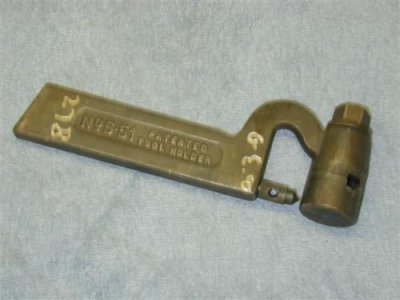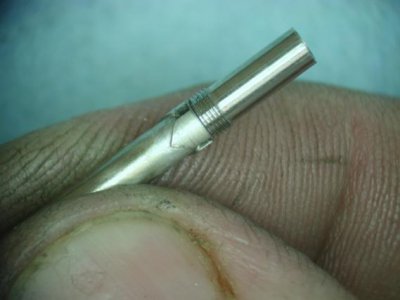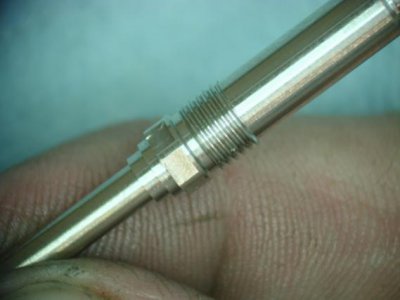- Joined
- Sep 22, 2010
- Messages
- 7,223
How do you make "silky smooth threads"? That is, threads that have a good fit and finish and operate very smoothly?
Here are some suggestions I have found:
Give the toolbit positive rake on the forming flank and hone the forming edge and the flat on the tip very smooth before use.
You need to keep the edge horizontal and on center, so add no back rake, but the top rake is important to keep the tool cutting freely. Imagine you've got a roll of toilet paper with the loose end coming over the top of the roll. Put an imaginary wedge under the loose end, and watch how the toilet paper flows over the wedge as you unroll it. That's exactly what you want the chip to do on the forming flank of the toolbit. (the forming flank is the leading one...it's the flank closest to the headstock when you're cutting a right hand external thread and it's called the forming flank because it uses its whole width to "form" the face it's cutting. The other flank is the generated flank because it's "generated" by successive small movements of the compound slide). Putting rake on the cutter this way, destroys the ability of the trailing flank to cut, so you MUST set over the compound slide to 30 degrees (NOT 29 1/2 degrees) from the cross slide axis, and advance the compound for each increment of cut. The trailing flank never cuts this way...the whole chip is created by the leading flank, just like the toilet paper flowing off the roll. Add a little Rapidtap, keep your DOC modest, and you will cut perfect, smooth dead nuts accurate threads with no tearing and no burs. A word of caution is that you do have to be careful in grinding weird rake angles on HSS (or carbide) threading tools. Too much rake can result in a bad thread form.


Here are some suggestions I have found:
Give the toolbit positive rake on the forming flank and hone the forming edge and the flat on the tip very smooth before use.
You need to keep the edge horizontal and on center, so add no back rake, but the top rake is important to keep the tool cutting freely. Imagine you've got a roll of toilet paper with the loose end coming over the top of the roll. Put an imaginary wedge under the loose end, and watch how the toilet paper flows over the wedge as you unroll it. That's exactly what you want the chip to do on the forming flank of the toolbit. (the forming flank is the leading one...it's the flank closest to the headstock when you're cutting a right hand external thread and it's called the forming flank because it uses its whole width to "form" the face it's cutting. The other flank is the generated flank because it's "generated" by successive small movements of the compound slide). Putting rake on the cutter this way, destroys the ability of the trailing flank to cut, so you MUST set over the compound slide to 30 degrees (NOT 29 1/2 degrees) from the cross slide axis, and advance the compound for each increment of cut. The trailing flank never cuts this way...the whole chip is created by the leading flank, just like the toilet paper flowing off the roll. Add a little Rapidtap, keep your DOC modest, and you will cut perfect, smooth dead nuts accurate threads with no tearing and no burs. A word of caution is that you do have to be careful in grinding weird rake angles on HSS (or carbide) threading tools. Too much rake can result in a bad thread form.


Attachments
Last edited by a moderator:


